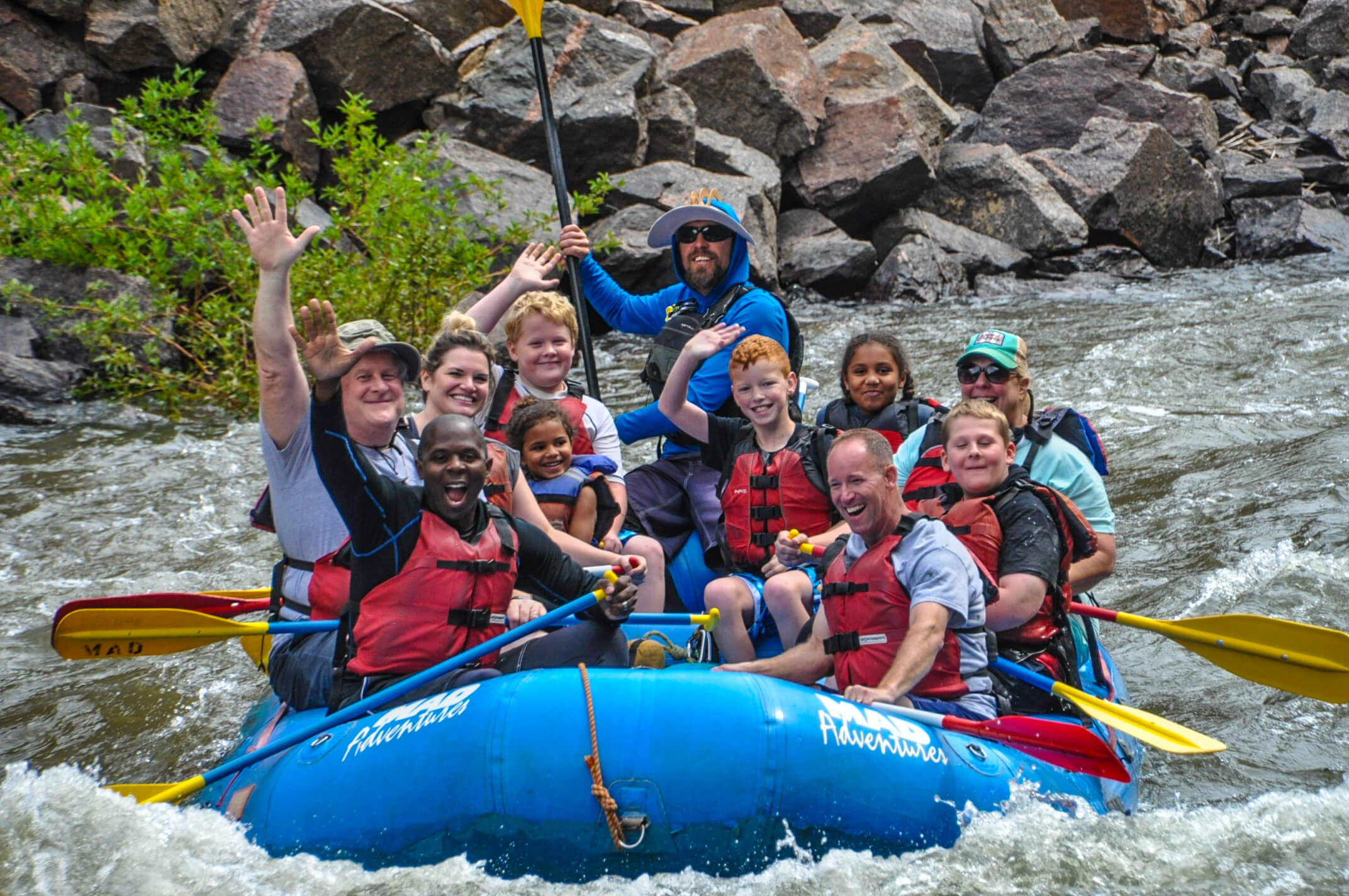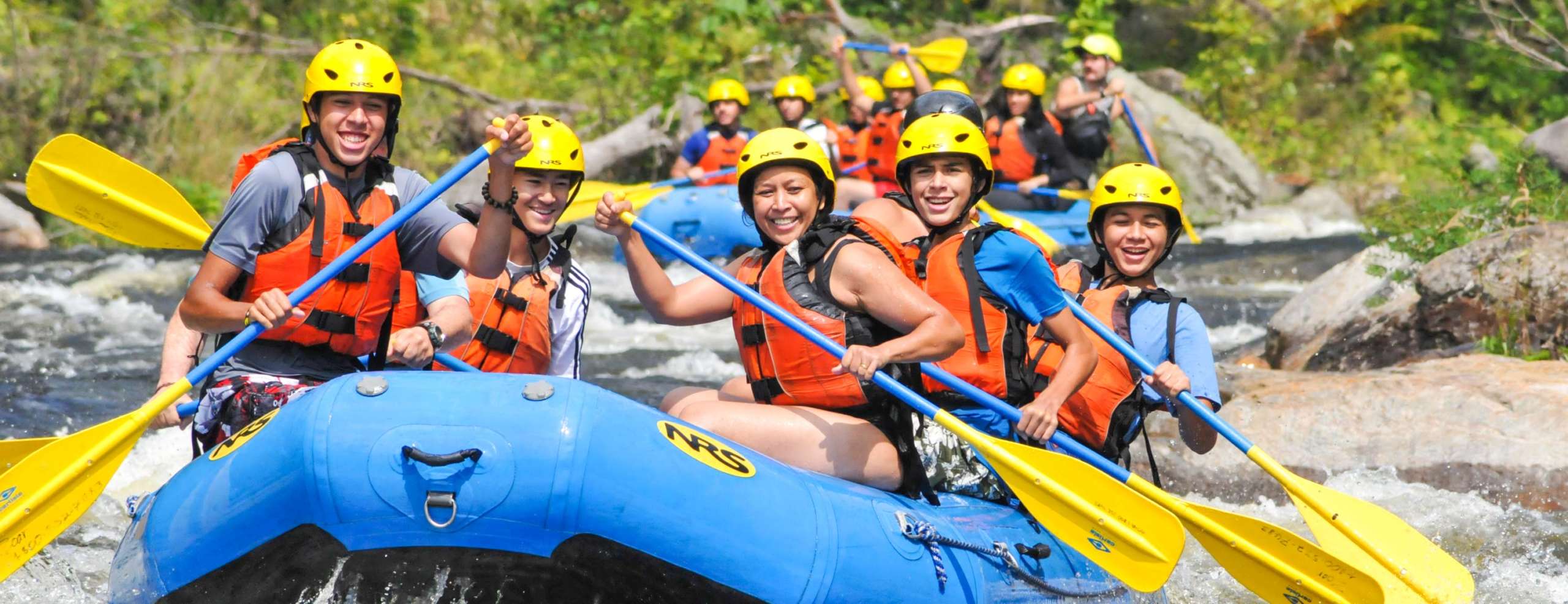Essential Skills for Water Rafting
Mastering the art of water rafting calls for a combination of specific skills and expertise to navigate the unforeseeable currents of rivers, making it a thrilling yet potentially dangerous activity. As enthusiasts tailor up to get started on their next experience, it is important to equip oneself with important proficiencies that surpass just paddling. From understanding the intricacies of river characteristics to swiftwater rescue methods and seamless group interaction, the journey down the river requires a mix of competence and flexibility. With safety and security procedures functioning as a keystone, individuals are confronted with a multifaceted difficulty that demands a meticulous method and steady focus.
Paddling Strategies
Grasping effective paddling methods is vital for browsing water boatings safely and properly. One basic strategy is the forward stroke, where paddlers dip the blade completely into the water and draw it back along with the raft to produce propulsion.
Besides the forward stroke, the draw stroke is necessary for making fast modifications or pulling the raft closer to a things. By putting the paddle blade perpendicular to the water's surface area and drawing the water towards the raft, paddlers can properly alter the vessel's direction. Furthermore, the backstroke serves as a beneficial device for backing up or reducing down the raft when necessary.
River Reviewing
Efficient paddling techniques, such as the forward stroke and attract stroke, play a vital duty in interpreting and navigating river currents, an ability referred to as river analysis. River analysis involves the capacity to evaluate the rate, deepness, and instructions of the water flow to make educated decisions while navigating rapids. By recognizing just how the water walks around obstacles and with various channels, rafters can select the most effective path to securely traverse the river.
One secret aspect of river analysis is identifying different sorts of currents, including swirls, hydraulics, and waves, and comprehending just how they can affect the plethora. Eddies, for instance, are areas where the water streams in a circular movement, commonly offering possibilities for remainder or critical maneuvers. Waves can indicate the visibility of rocks or obstacles, needing fast adjustments in paddling technique. Hydraulics, typically referred to as "openings," are areas where water recirculates back upstream, posturing prospective risks to rafts.
Mastering the ability of river analysis is vital for secure and delightful rafting experiences, making it possible for paddlers to navigate difficult waters with self-confidence and precision.

Swiftwater Rescue
Comprehending swiftwater rescue strategies is vital for water rafting fanatics to respond properly in emergency situation circumstances on fast-flowing rivers. Swiftwater rescue includes a set of specialized skills and expertise aimed at safely extracting people from swift-moving water. One crucial facet of swiftwater rescue is recognizing the threats present in fast-flowing rivers, such as strainers, undercut rocks, and strong currents, to prepare and implement successful rescue operations.
Appropriate devices is necessary for swiftwater rescue, consisting of throw bags, rescue ropes, headgears, and individual flotation devices. Rafting fanatics must be proficient at utilizing this devices in high-stress situations to ensure the safety and security of themselves and others. Additionally, swiftwater rescue methods often involve synergy and control amongst rafters to implement intricate rescue maneuvers properly.
Learning swiftwater rescue is highly suggested for individuals participating in water rafting tasks, as it outfits them with the needed skills to handle emergency situations promptly and successfully. White Water Rafting Colorado. By exercising and comprehending swiftwater rescue techniques, water rafting enthusiasts can enhance their safety and that of their fellow rafters on difficult river explorations
Group Communication
Reliable synergy in water rafting relies heavily on smooth communication among staff member to make sure worked with and safe navigation through difficult river conditions. Concise and clear interaction is important for the success of any rafting exploration. Group participants need to have the ability to effectively share important details such as paddling commands, caution signals, and navigational directions.
In the usually unpredictable and fast-paced atmosphere of river rafting, punctual and exact interaction can indicate the difference in between a prospective calamity and a successful run - White Water Rafting Colorado. Each team participant plays an essential function in the general communication process, whether it be paying attention diligently to the guide's directions, communicating information to other paddlers, or signaling for assistance when required
Developing a typical language and communication system prior to hitting the water is important. This guarantees that every person gets on the very same web page and understands how to connect effectively during the check here rafting journey. By fostering a society of open communication and common regard, rafting groups can boost their efficiency and safety on the river.

Security Procedures
In the context of water rafting, the foundation of group communication developed during expeditions is further reinforced with rigorous adherence to safety and security protocols. Security procedures are critical in making sure the health of both rafters and overviews during water rafting excursions. One essential security method is the proper wearing of individual flotation protection gadgets (PFDs) by every individual on the raft. PFDs are vital in emergency situations to keep individuals afloat and provide buoyancy. Furthermore, rafters must be fluent in swiftwater rescue strategies and procedures in case of someone dropping too far or if the boating tips over.
One more secret security procedure is the extensive instruction given by guides before beginning on a rafting trip. This briefing normally consists of details on paddling methods, what to do in situation of various emergencies, and signals made use of for interaction throughout the trip. Additionally, it is vital to have assigned safety kayakers coming with the team to offer immediate assistance if required. By purely sticking to these safety and security protocols, water rafting tours can be both go to my site awesome and secure for all participants included.
Final Thought
Finally, grasping vital skills for water rafting is critical for a enjoyable and secure experience on the river. Paddling methods, river reading, swiftwater rescue, team interaction, and security methods are all vital elements that add to a successful rafting trip. By sharpening these abilities, rafters can navigate challenging waters with confidence and ensure the security of themselves and their staff member.
Understanding the art of water rafting calls for a mix of precise skills and knowledge to browse the unpredictable currents of rivers, making it a thrilling yet possibly hazardous task. By placing the paddle blade perpendicular to the water's surface and pulling the water towards the raft, paddlers can efficiently change the vessel's instructions.Understanding swiftwater rescue methods is crucial for Going Here water rafting fanatics to react successfully in emergency circumstances on fast-flowing rivers.Efficient synergy in water rafting depends greatly on seamless communication among group members to ensure collaborated and safe navigating through difficult river problems.In verdict, grasping essential abilities for water rafting is critical for a pleasurable and safe experience on the river.